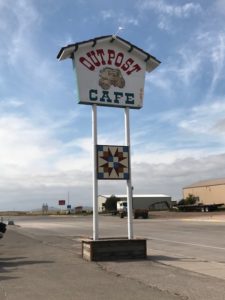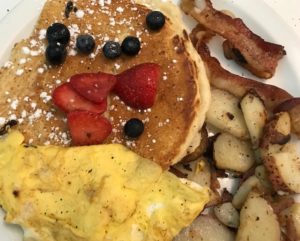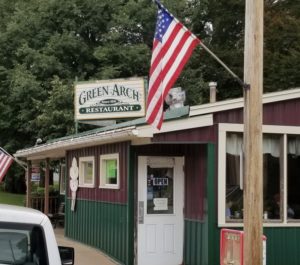Category — Life
America the Beautiful
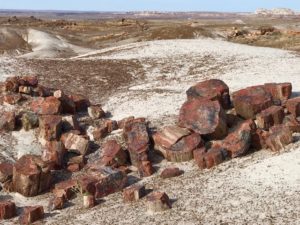 It is such a pleasure, such a relief (and yes, I know, such a privilege) to be enveloped by warm feelings about my country. I don’t, of course, mean the current government. I don’t, of course, mean the heart-stopping (sometimes literally) inequities, the deep and damaging social issues that ruin lives and erode spirits.
It is such a pleasure, such a relief (and yes, I know, such a privilege) to be enveloped by warm feelings about my country. I don’t, of course, mean the current government. I don’t, of course, mean the heart-stopping (sometimes literally) inequities, the deep and damaging social issues that ruin lives and erode spirits.
I mean the geography. I mean the Petrified Forest with its mineralized, crystalline logs—blue, green, pink, orange—part of a striking desert landscape that used to be lush tropics. That was millions of years ago when all the continents were one land mass, Pangea, when Arizona was where Costa Rica is today. I mean the otherworldly formations of blue-gray bentonite clay, striated hillocks and mesas with eroded surfaces that look like elephant skin. I mean escarpments that rise from the flat scrublands and extend for miles. Rock outcroppings, arches, table-tops, cairns, canyons and cliffs. I mean pinon forests, juniper, Ponderosa pine. I mean 9,000-foot mountain passes and 12,000-foot mountains.
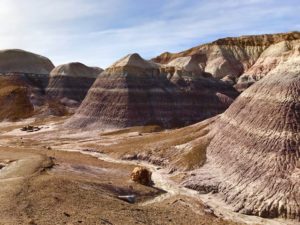
And I also mean the richness of cultures that live in these places: the silver-and-turquoise-jeweled arty types walking the streets of Santa Fe, the motorcycle-riding day drinkers in Madrid (pronounced MAY-drid), the New Agers soaking in Giggling Springs up at Jemez, the pick-up driving cowboys of Gallup—white, Hispanic, Native—in their straw hats and billed caps, the families—Native and Hispanic, the old people with their faces etched by sun and wind sitting beside grandchildren, great grandchildren.
This is the land that used to be Mexico. This is the land that used to be Navajo and Hopi, Zuni and Apache. And “we”—the U.S.A. of the 18th and 19th and 20th centuries—took it by force, by disease, by deceit, by political maneuverings. That is our history. That is our shame.
But it is also true that when you drive through this country, hike it, walk its main streets, eat at its diners, you can see how deeply and permanently embedded our diversity really is. The Navajo are here, 65,000 people strong. Almost fifty percent of New Mexicans are either descendants of Spanish colonists or recent immigrants from Hispanic America. For just a moment, let’s not talk about poverty here. Let’s revel in the beauty of geographic, cultural and racial diversity. There is a deep pleasure in experiencing it, in walking through it. Land and people.
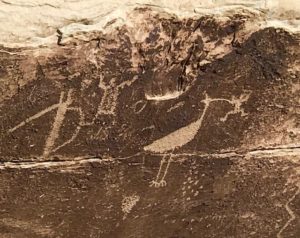
March 13, 2019 2 Comments
(S)no(w) Expectations

Funny how no heat, no electricity and no running water are not a big deal when you camp across the country for three weeks but are very much a big deal when they happen in your own home.
Yes, snowpocalypse has come to Eugene, Oregon, dumping three feet of the stuff at our house. Everyone on our grid (plus thousands elsewhere in the city and the entire towns of Oakridge and Blue River) are without power, possibly for a week. For us, this means not just no lights (no big deal) and no heat (okay, we have a woodstove and a gas fireplace) but no running water (we’re on a well with an electric pump). Which means no flushing. Oh, and our place is down a steep, quarter-mile access road. So, no access.
Yesterday, as I was emptying the refrigerator and burying food in the snow, heating bottled water on the propane cooktop to wash my face, positioning battery lanterns and candles around the kitchen and hunkering close to the fire, I thought about how “roughing it” was so much fun during our transcontinental Route 20 “we’ve all come to look for America” trip last fall. And how not fun it was now.
And how privileged I am to be able to write this because I am now in a warm hotel room with Internet and a flush toilet.
February 27, 2019 No Comments
Disaster for ALL!!!
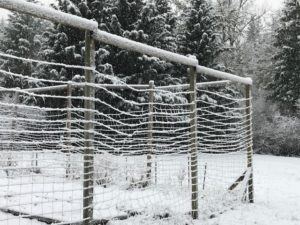
Snowpocalypse. Snowmageddon.
Apocalypse is, like, the end of the world. As in final destruction.
Amageddon is, like, the end of the world. As in Day of Judgement. As in last battle between Good and Evil.
Five inches of snow is, like, five inches of snow. Or, okay, maybe a little more. It get it. It snowed. A lot.
But last week we were inundated with a tsunami of hyberbolic posts on social media. With ginned-up, over-wrought media coverage.
I understand that cities like Seattle and Portland are not geared up (equipment, infrastructure) for harsh winter weather like Chicago and Minneapolis. But geez. Can we please ratchet down the disaster talk?
What does this disaster porn do for us? It makes us feel even more besieged, more vulnerable, more at the mercy of forces beyond our control than we have felt during the past two years of sinking in the quicksand of Trumpism.
And what a disaster for us all, as we are hammered by (and hammer ourselves and each other with) messages of our victimization, as we embrace what psychologists call Learned Helplessness, as we avoid the deep issues and challenges that don’t just zip across the landscape, dump on us for a few days, lose their force and move on.
The disaster of the recent northwest Snowpocalypse? It is that we have people who live on the streets, and cold weather, wet weather, snow make that life even harder and more dangerous than it already is. The disaster is that in Seattle (the ninth richest city in the US) in Portland (the oh-so-hip up-and-comer) in Eugene (so left-leaning it can’t stand up) tens of thousands of people live without shelter from the storm(s).
The disaster is not that the local hardware store is sold out of snow shovels. The disaster is not that it takes longer to commute in to work.
(Watch out! Careful! Read at your own peril! My two previous disaster posts are here and here.
.
February 13, 2019 2 Comments
Happy Mentorship Month

January is National Mentor Month!
And I get to celebrate. I am an “official” mentor through Sponsors Mentorship, an exceptional program that matches community members with those recently released from prison. This simple, person-to-person, let’s-have-a-cup-of-coffee, let’s-take-a-hike relationship is, in Sponsors’ words, “an affirmation of the belief that there’s no such thing as a throw-away person.”
Re-entry into the “real world” is extraordinarily challenging for those who have been behind bars, especially those incarcerated for many years, even decades. Re-entry goes far beyond the definable challenges of finding housing, finding employment, meeting probation provisions, staying clean and sober. It means, for those away for decades, entering a new world, a swipe and click world they know nothing about, a world of people walking around staring at hand-held devices they have never held in their hands that perform functions they didn’t even know existed.
But the underlying challenge of re-entry is even more formidable. It is learning how to unlearn the institutionalized self. That’s the persona, the attitude, the language–verbal and body—the way of relating, of being, that an imprisoned person adopts to stay sane and safe. It is functional behind bars. It is dysfunctional in the world outside.
My new book, coming out in May, A Grip of Time: When Prison is Your Life, is about what life is like when that life is lived almost entirely behind bars. It is what it takes to live a life of meaning in a place devoid of meaning. It is about guilt and shame and the possibility of change and forgiveness. (It’s also sometimes funny. Really.) The book is based on my three years of facilitating a writing group for Lifers at a maximum security penitentiary, working with men convicted of murder and sentenced to life in prison. I teach them how to craft stories about their lives. They teach me much bigger lessons about hope and fear and trust, about what matters and what doesn’t. To learn so much about life from those who live such a constricted version of it is an extraordinary experience.
My next book will be about re-entry–thus my new involvement with Sponsors. Ninety-five percent of the men and women we imprison will be released someday. Last year more than 650,000 were, including my mentee. I am learning from her what re-entering the world means. I am learning from the compassionate, clear-eyed, deeply empathetic but completely professional people at Sponsors what it takes to make successful re-entry possible. The Mentorship Program is one small part.
January 9, 2019 4 Comments
Solstice. Full Moon
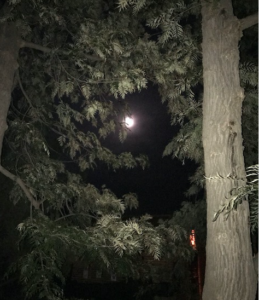
This is a photograph I took of the full moon on solstice eve. Photographers say, “an image I made” not “took,” and I like this much better. I think it more accurately reflects the art involved—but does it sound pretentious? To hell with that.
I wanted to use this image I made as the centerpiece of today’s post for a few reasons:
>I like it. It is ghostly and mysterious but not scary. It feels otherworldly to me, yet it is very much of this world.
>It was taken while walking with new friends, two intensely creative, enormously accomplished but down-to-earth-humble couples I met while conducting a workshop in Mexico. We bonded the first night we met in that I’ve-known-you-forever way that seldom happens. They are funny and kind and fascinating and we got each other’s cultural references. Will we see each other again? I have no idea. One couple—cinematographers—live in Hawaii; the other—jazz musicians—live in Wisconsin. I hope our paths cross again, but even if they don’t, this won’t diminish the power and intensity of that instant friendship.
>I have unsuccessfully pointed my iPhone to the night skies many times, hoping to capture moon, stars, back-lit clouds. (With my “real” camera I would be more successful, but the best camera is the one you have at the moment, as they say.) Sending a flash out into the sky rarely works. This time, I let the camera’s light bounce off a nearby tree, wondering what would happen. This happened. And I am taking a life lesson from it. Focusing on the close-by can illuminate the far-away. (Which, now that I think of it, is just another way of saying “the small story that illuminates the larger theme”…the approach that underlies my writing life. Ha. How about that?)
>Solstice. Full moon. Isn’t that enough by itself?
December 26, 2018 1 Comment
That Place
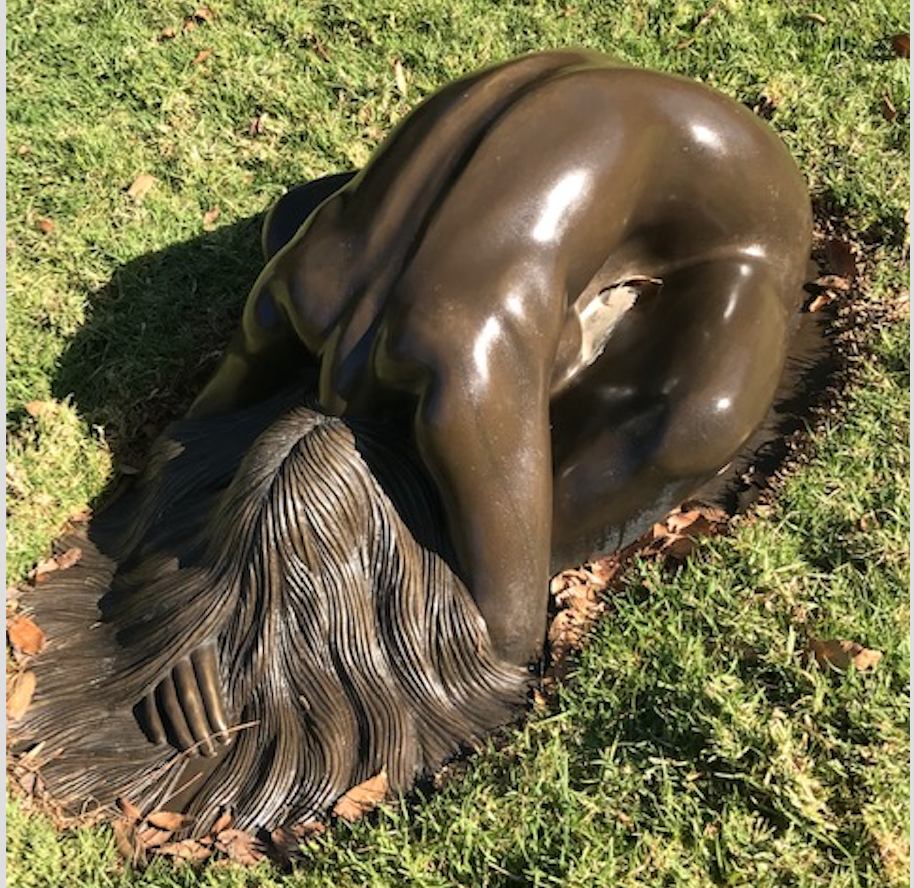
Have you ever been in a place that feels totally, gloriously, vibrantly female? A place that immediately attunes to some inner vibration? A place that it makes your body sing? And you didn’t even know your body could sing. A place where you so effortless fit in that it makes you realize how much effort it has taken to fit in all those other places that are not this way, places where you have lived and worked, walked through, visited,places where you had to either figure out how to accommodate yourself, how to not be too conspicuously who you were (that is: female) or places where you had to be careful, be on high alert, watch yourself. This is a place that hugs you with a full-body hug. A warm, soft female body.
This is the place I find myself right now, and I am all but overcome with the privilege of being here. This place, south of San Diego just across the Mexican border, was founded almost 80 years ago by a Hungarian-born philosopher and health “cultist” and his Brooklyn-born acolyte wife—who after the professor’s death 40-plus years ago, dreamed a much bigger dream, took charge of this place, and while re-making it, re-made herself into a powerful (and ageless) business woman.
For the past 30 years, this place has been re-imaged, nurtured (literally by hand) and built stone by stone, plant by plant by that woman’s daughter. She, the daughter, has designed most of the landscapes throughout the 32 lush acres of gardens. She has done this with grace and intention, with both an aesthetic and environmental consciousness, and with deeply feminine energy. The trick has been to create, out of earth, stone, and plants, a cultural, horticultural, and personal statement—a living expression—and make it feel as if it has always been here. And make it feel like you belong here.
It is the winding pathways that meander past little meadows and gnarled grape vines, across small wooden bridges, under arches, around boulders that sprout succulents from their cracks. It is the hidden benches,the pergolas, the smell of lavender and rosemary and sage. It is the gift of a tiny bottle of rose neroli oil left on your doorstep. It is this statue, my favorite of many on the property: her strong back, her luxuriant hair, how unassumingly, fearlessly she rests in child’s pose, how she glistens in the sun.
Thank you, Deborah Szekely. Thank you, Sarah Livia Brightwood.
December 19, 2018 No Comments
Lists

This post goes out to those of you out there who (like me) live and die by The List. Who think life can be managed by making lists. Who think lists are the pathways to sanity.
Who should know better.
My list for Tuesday included writing a little essay for the blog. It is now 10:15 pm Tuesday night. See that list above? I am on #6.
Nevertheless, I continue to put my trust (my life) in The List. I love making lists. Even more, I love checking off items from the lists I make. Sometimes I will do something that is not on my list, and I will add it to the list just for the joy of checking it off. Oh yes, I know some of you do this too. I have also been known to make lists of my lists. Or make nonsense lists that get me out of writing thoughtful essays. Just sayin.
Here is a list of the reasons I love making lists (stolen/ recycled from a post I wrote a few years ago.) Mea culpa.
1. Making a list quiets the omg moments that keep me awake at 2 am.
2. Making a list is a low-bar entry to actually doing whatever needs to be done. Sure, no sweat, I can make a list! It is way less scary (not to mention time-consuming) than starting the project itself.
3. Lists break down huge tasks (writing a book, regaining the White House in 2020) into manageable action items.
4. Lists simplify life. Whaaat? All I have to do is these 5/ 10 things!
5. Lists help me think things through. They demand logic.
6. Lists clear my brain. I no longer have to try to remember all this. I wrote it all down!
7. Lists are finite. It may not seem like it, but my tasks are not endless!
8. Lists keep me from procrastinating. Uh, Friday…and two more things on the list? Better get to them.
9. Crossing something off a list = instant gratification.
10. If you save your lists (um, yes, I do), they provide an historical record of your life.
December 12, 2018 1 Comment
Hole-ier than thou
Black Friday, Small Business Saturday, Cyber Monday. Are we done yet?
How many emails flooded your inbox with deals and steals, holiday blow-outs, huge discounts, cool exclusives, free gifts, special savings codes and all manner of other inducements to spend, spend spend?
Did every site you ever browsed, let alone bought something from, bury you in an avalanche of offers?
Did you resist?
I resisted the entire weekend. I was so danged proud of myself. I was just polishing my anti-consumerist halo when it happened. It was Tuesday morning. I succumbed.
It was not my fault. Really. It was a chain of events that led me, inexorably, to dip my toe in our capitalist ocean. First, that morning I went to my closet to find this lovely sweater I hadn’t worn in a while that used to be my favorite. It was hanging right next to one of the cedar things you buy for closets so that moths don’t eat that lovely sweater that used to be your favorite. The moths didn’t get the message. Or they have learned to love the smell of cedar.
 Upon close examination, I found four holes in the sweater, including three in the right shoulder area, which I guess was extra tasty. I put on an inferior, less-loved sweater and headed down to my writing room to work. Can I help it that right there, in my inbox, was a message from a clothing company with a 25 percent off/ free shipping offer…for SWEATERS? That’s number two.
Upon close examination, I found four holes in the sweater, including three in the right shoulder area, which I guess was extra tasty. I put on an inferior, less-loved sweater and headed down to my writing room to work. Can I help it that right there, in my inbox, was a message from a clothing company with a 25 percent off/ free shipping offer…for SWEATERS? That’s number two.
How could I not look?
And then, numero tres, on that very first page–the first page of what were more than a dozen pages of sweaters, mind you– was a sweater that looked just like my now moth-eaten favorite sweater. Only better.
Did I want to chat with the pop-up person who could answer any questions about this item? I did not. I just wanted to click and buy.
Which is what I did. Then I searched for new cedar thingees for the closet and bought those.
Forgive me.
November 28, 2018 6 Comments
Do what you can do
Tomorrow is Thanksgiving.
I am not going to lecture you—and by “you” I mean me—about all we should be thankful for. I am not going to food-shame you—and by “you” I mean me—by writing about the calorie-busting over-consumption that will undoubtedly be taking place in your (my) dining room tomorrow, in dining rooms in homes from coast to coast.
What I am going to do is remind you that you have it in your power to help some hungry members of your community eat a warm meal tomorrow. And the next day. And the next.
I am one of 80 volunteers who help feed up to 300 hungry people a day, Monday through Thursday, in a welcoming, humanizing we are not a soup kitchen restaurant. We are overseen by a small, dedicated staff of seven of the hardest working, warmest-hearted people you could ever hope to meet. The Dining Room, our cloth-napkin, sit-and-be-served facility is one program under the umbrella of Food for Lane County, a nonprofit food bank founded 34 years ago founded to help low-income folks have access to wholesome, nutritious food.
Because we are affiliated with county government, we observe government holidays. That means tomorrow, Thanksgiving, we will be closed. Our big fancy meal is being served today. Our diners will be greeted outside with new socks and gloves if they need them, and with hot coffee and cocoa as they wait to be seated. We’ll serve generous slabs of ham with mashed potatoes, green bean casserole, fresh-baked dinner rolls and a slice of apple pie.
Our efforts today—and all the other days of the year–will not eliminate hunger in our community. But that doesn’t deter us. Nor should it deter you. This Thanksgiving (and every day), I want to remember what author, Unitarian minister and fellow Aries Edward Everett Hale wrote :
I am only one,
But still I am one.
I cannot do everything,
But still I can do something;
And because I cannot do everything,
I will not refuse to do the something that I can do.
Do what you can do.
November 21, 2018 2 Comments
Route 20 Report #6
There may be no better way to get to know our country than to eat breakfast at local, small-town diners.
At a diner in Arco, Idaho (pop. 849), our friendly, efficient 30-something waitress told us she’d “moved to the city” (Idaho Falls, pop. 60,000) for a few years, but she said, smiling, shaking her head, gazing out the big front window at what looked to me like a desolate sweep of nothing, “I missed home too much.” Everybody loves some place.
At a diner in Lusk, Wyoming (just 8 miles west of Node), we sat in a booth waiting for our breakfast watching as a half dozen patrons—older men in cowboy hats—stopped to talk with, pat on the back, a very old man, clearly demented, sitting at a table, clearly his spot. The waitress checked on him periodically. He talked to everyone and no one. Every two or three minutes, he’d laboriously lift himself from his chair, grab his cane, then think better of it (or forget what he was doing) and sit down again. And then another person would come over and greet him. He was part of the community.
At Friendly Corner in Laurel, Nebraska, when we asked for a menu, the rosy-cheeked woman who motioned us to any table, said “we’ll make anything you like. Just name it.” So we did. Payment was by donation, a jar on the counter. She didn’t even mention that. She and her husband ran a faith-based ministry for local kids, and the restaurant supported that. Because some people live what they believe.
At the Green Arches diner in Brocton, New York (from a hill above town you can see across Lake Erie to Canada), a woman “from over the ridge” and two of her daughters tease and banter with each other as they fry bacon, flip pancakes and chat up customers. All the kids (there are nine from two marriages, or maybe three) live in town (pop. 1,426). The guy at the end of the counter looks like he stepped out of the pages of a Richard Russo novel. The place is so damned homey that you forget it’s not your home. You kind of want it to be.
And yes, okay, there was also the touristy, conspicuously consumptive artery-clogging breakfast buffet at the duded up Irma Hotel in Cody, where our booth was next to a table of a dozen tour bus retirees. The men tucked into hubcap-sized plates of chicken fried steak smothered in country gravy. The women picked at little salads.
And then there was this counter-only diner that looked like something bad could happen (or did happen) there. The woman behind the counter ignored us. We were the only ones in the place. Everything about her screamed I just got out of prison don’t fuck with me. Finally another lady, a little grandma, stuck her head out of the backroom. We asked for a piece of pie. “It’s not very good,” she said, setting down a plate with a slice of cherry. She was right.
October 10, 2018 4 Comments



